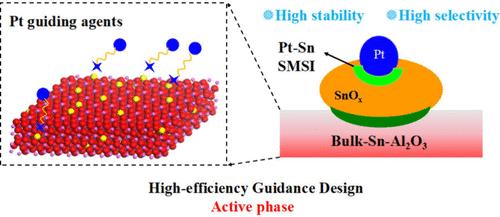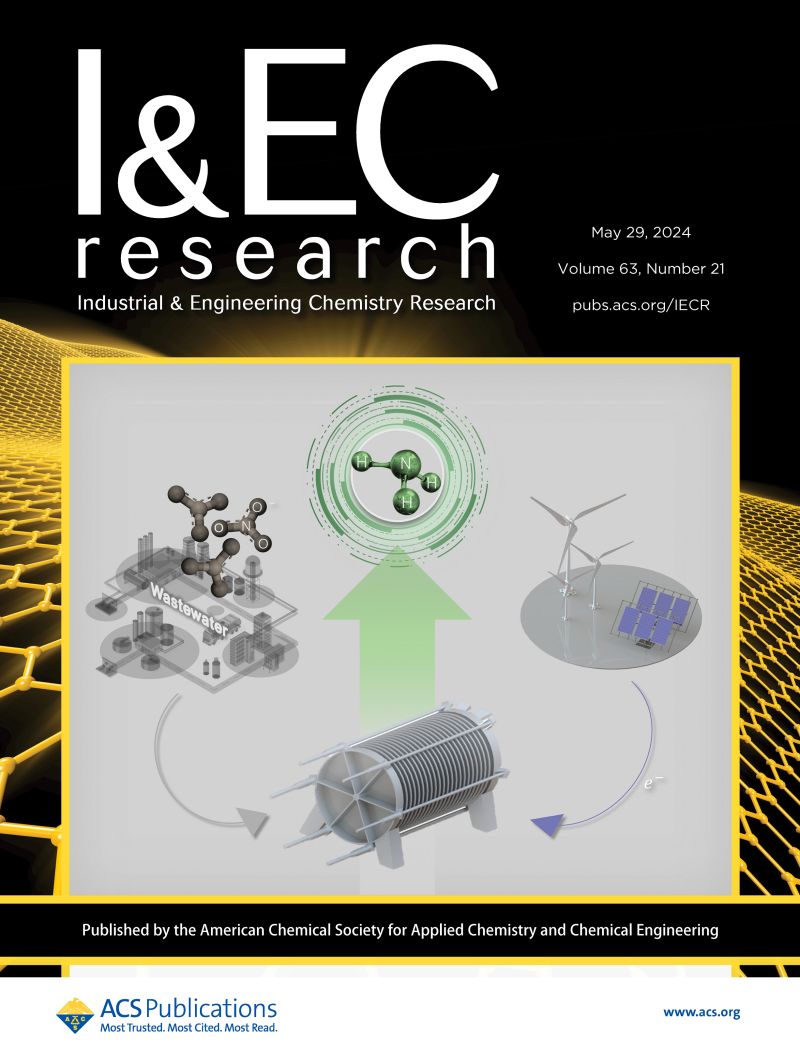Elucidating High-Efficiency Guidance Design and Performance Optimization of Pt-Based Catalysts for Propane Dehydrogenation
IF 3.9
3区 工程技术
Q2 ENGINEERING, CHEMICAL
引用次数: 0
Abstract
Maintaining high dispersion of Pt in catalysts remains a significant challenge due to Pt migration and aggregation. Addressing this gap is critical for advancing the design of catalysts with enhanced performance and stability, particularly in applications requiring strong metal–support interactions. Here, we introduce a novel catalyst preparation method that employs an ethylenediaminetetraacetic acid disodium salt (EDTA) as a directing agent to stabilize Pt on an Al2O3 support promoted by Sn. Leveraging the ability of EDTA to selectively bind Pt and Sn, we synthesized a highly dispersed Pt–Sn–Al2O3 dehydrogenation catalyst. First-principles calculations based on density functional theory confirmed that the carbonyl and hydroxyl oxygen atoms in EDTA preferentially bond with Sn in the Al2O3 support, facilitating precise Pt anchoring. Experimental results further validated these findings, showing that EDTA-guided synthesis enhanced the formation of Pt–Sn–Al2O3 active sites and led to stronger metal–support interactions, resulting in uniform Pt particle distribution and improved catalyst stability. This approach not only increased propylene selectivity from about 85% to 93% but also significantly reduced methane byproduct formation. These findings demonstrate that the introduction of EDTA as a directing agent can effectively address Pt aggregation issues, offering a promising strategy for designing more efficient and stable catalysts for industrial dehydrogenation processes.

丙烷脱氢pt基催化剂的高效导向设计与性能优化研究
由于Pt的迁移和聚集,保持Pt在催化剂中的高分散仍然是一个重大挑战。解决这一差距对于提高催化剂的性能和稳定性至关重要,特别是在需要强金属支撑相互作用的应用中。本文介绍了一种新的催化剂制备方法,该方法采用乙二胺四乙酸二钠盐(EDTA)作为导向剂,在锡促进的Al2O3载体上稳定Pt。利用EDTA选择性结合Pt和Sn的能力,我们合成了一种高度分散的Pt - Sn - al2o3脱氢催化剂。基于密度泛函理论的第一性原理计算证实,EDTA中的羰基氧原子和羟基氧原子优先与Al2O3载体中的Sn结合,有助于精确锚定Pt。实验结果进一步验证了这些发现,edta引导下的合成促进了Pt - sn - al2o3活性位点的形成,并导致更强的金属-载体相互作用,从而使Pt颗粒分布均匀,提高了催化剂的稳定性。该方法不仅将丙烯选择性从85%提高到93%,而且显著减少了甲烷副产物的生成。这些发现表明,引入EDTA作为导向剂可以有效地解决Pt聚集问题,为设计更高效、更稳定的工业脱氢催化剂提供了一种有希望的策略。
本文章由计算机程序翻译,如有差异,请以英文原文为准。
求助全文
约1分钟内获得全文
求助全文
来源期刊

Industrial & Engineering Chemistry Research
工程技术-工程:化工
CiteScore
7.40
自引率
7.10%
发文量
1467
审稿时长
2.8 months
期刊介绍:
ndustrial & Engineering Chemistry, with variations in title and format, has been published since 1909 by the American Chemical Society. Industrial & Engineering Chemistry Research is a weekly publication that reports industrial and academic research in the broad fields of applied chemistry and chemical engineering with special focus on fundamentals, processes, and products.
 求助内容:
求助内容: 应助结果提醒方式:
应助结果提醒方式:


